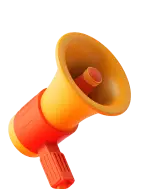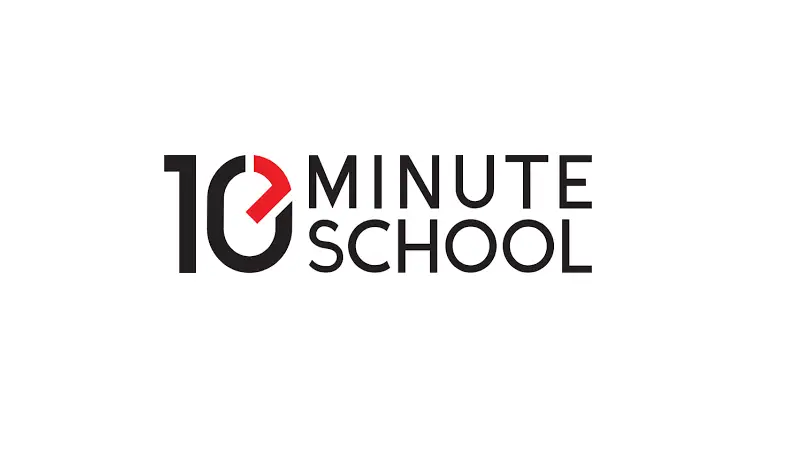Canva for Education transforms classrooms by empowering teachers and students to create vibrant, engaging learning materials without design expertise. From interactive worksheets to stunning presentations, Canva’s free, educator-focused platform makes teaching and learning fun and accessible. Tailored for beginners, this guide shows how to use Canva for Education to craft lesson plans, posters, and more. With over 85 million education users globally (Canva, 2025), it’s a trusted tool for K-12 and higher education. Ready to spark creativity in your classroom? Let’s explore how to get started!
What Is Canva for Education
Canva for Education is a free version of Canva designed for verified teachers, students, and schools. Launched in 2020, it offers premium features-equivalent to Canva Pro ($12.99/month)-at no cost, including templates, stock images, and AI tools like Magic Write. It’s built to enhance learning through visual design, supporting collaborative projects and integrations with Google Classroom and Microsoft Teams. With over 250,000 templates and a user-friendly interface, it’s perfect for educators and students new to design.
Featured Snippet Opportunity:
Canva for Education is a free platform for verified teachers and students, offering templates, AI tools, and collaboration features to create engaging worksheets, presentations, and posters.
Why Use Canva for Education?
Benefits for Teachers
- Engaging Materials: Create visually appealing worksheets, infographics, and slides to capture student attention.
- Time-Saving: Pre-made templates reduce prep time, letting teachers focus on teaching.
- Collaboration: Share designs with students or colleagues for group projects.
- Free Access: Verified educators get premium features without the $12.99/month Pro cost.
Benefits for Students
- Creative Expression: Design posters, presentations, or infographics to showcase learning.
- Skill Development: Learn design basics, boosting creativity and digital literacy.
- Accessibility: Works on web, mobile, or tablets, ideal for classroom or remote learning.
Why It’s Beginner-Friendly
Canva’s drag-and-drop interface requires no design skills, and its education-specific templates cater to K-12, higher education, and homeschooling. In 2023, Canva for Education reached 85 million users, proving its impact (Canva, 2025).
How to Become a Canva Creator and Earn Passive Income (A Beginner’s Guide)
How to Get Started with Canva for Education
Step 1: Sign Up for Canva for Education
- Visit Canva.com: Go to Canva for Education and click “Sign up for free.”
- Verify Eligibility: Use a school email or submit proof of educator status (e.g., teacher ID, school letter). Students under 13 need teacher or parent approval.
- Approval Time: Typically 24–48 hours. Once approved, you get premium features like unlimited templates and 1TB storage.
Pro Tip: If your school uses Google Workspace or Microsoft 365, sign up with those credentials for faster verification.
Step 2: Explore the Canva Dashboard
- Homepage: Access templates via the Create a design dropdown (e.g., Worksheet, Presentation).
- Education Hub: Find curated templates for lesson plans, posters, and classroom decorations.
- Apps Menu: Use AI tools like Magic Write or integrations like Google Classroom.
Pro Tip: Download the Canva mobile app for on-the-go editing, ideal for busy teachers.
Top Ways to Use Canva for Education
Here’s how beginners can leverage Canva to enhance teaching and learning.
1. Create Engaging Worksheets
Worksheets make lessons interactive and memorable. Canva offers thousands of education-specific templates.
- How to Create:
- Select Worksheet from the Create a design menu.
- Choose a template (e.g., math puzzles, reading comprehension).
- Customize with text, images, or charts using the drag-and-drop editor.
- Add interactive elements like checkboxes or fillable fields with Canva Code.
- Export as PDF or share via a link.
- Example: Design a biology worksheet with labeled diagrams of plant cells, using Canva’s free illustrations.
Pro Tip: Use Magic Write to generate worksheet questions (e.g., “Write 5 quiz questions on photosynthesis”).
2. Design Stunning Presentations
Canva’s presentation tools rival PowerPoint, with animations and collaboration features.
- How to Create:
- Choose Presentation from the homepage.
- Select a template (e.g., history timeline, science lesson).
- Add text, images, or videos, and use Magic Animate for transitions.
- Present live using Canva’s Present feature or export as PPTX.
- Example: A history teacher can create a slide deck on the American Revolution, embedding YouTube videos for context.
Pro Tip: Use Canva’s Talking Presentations to record narrated slides for asynchronous learning.
Top Canva AI Tools for Beginners- Your Guide to Easy Design
3. Craft Classroom Posters and Infographics
Posters and infographics visually reinforce concepts, perfect for classroom decor or student projects.
- How to Create:
- Select Poster or Infographic from the design menu.
- Choose a template or start from scratch.
- Add charts, icons, or photos from Canva’s free library.
- Print via Canva Print or share digitally.
- Example: Create a periodic table poster with vibrant colors for a chemistry classroom.
Pro Tip: Use Magic Media to generate custom infographic visuals (e.g., “Diagram of the water cycle”).
4. Build Interactive Quizzes and Activities
Canva Code lets you add interactive elements like quizzes or timers to engage students.
- How to Create:
- Access Canva Code from the Apps menu.
- Enter a prompt (e.g., “Create a multiple-choice quiz on fractions”).
- Embed the quiz in a worksheet or presentation.
- Share with students via a link or Google Classroom.
- Example: A math teacher can design a quiz with instant feedback for students to practice algebra.
Pro Tip: Test quizzes in Canva’s preview mode to ensure functionality.
5. Create Virtual Classroom Backgrounds
Virtual backgrounds enhance online classes, making Zoom or Teams sessions more engaging.
- How to Create:
- Select Virtual Background from the design menu.
- Choose a template or upload a classroom-themed image.
- Customize with text (e.g., “Welcome to 5th Grade!”) or animations.
- Download as PNG for Zoom or Teams.
- Example: Design a science-themed background with planets and stars for virtual lessons.
Pro Tip: Use Background Remover to create transparent teacher headshots for overlays.
6. Design Lesson Plans and Schedules
Canva’s templates simplify lesson planning and classroom organization.
- How to Create:
- Search for “Lesson Plan” or “Class Schedule” templates.
- Customize with weekly goals, activities, or color-coded subjects.
- Share with students or parents via PDF or a shareable link.
- Example: A kindergarten teacher can create a colorful weekly schedule with icons for reading and playtime.
Pro Tip: Use Canva’s collaboration feature to co-create lesson plans with colleagues.
7. Produce Student Portfolios and Projects
Students can use Canva to showcase their work, building digital literacy and creativity.
- How to Create:
- Select Portfolio or Presentation templates.
- Add student work (e.g., essays, photos, or drawings).
- Customize with fonts, colors, or videos.
- Share as a website link or PDF.
- Example: A high school student can create a portfolio of art projects with embedded videos explaining their process.
Pro Tip: Encourage students to use Magic Design for professional layouts without design skills.
Dr. Med Kharbach’s Educators Technology highlights Canva’s role in fostering student creativity (2024).
Leveraging Canva’s AI Tools for Education
Canva’s Magic Studio AI tools make designing easier for educators and students.
Magic Write: Generate Text Content
- Use: Create lesson prompts, quiz questions, or parent newsletters.
- Example: Prompt “Write a 100-word summary on the solar system for 5th graders” to generate student-friendly text.
- Access: Free (50 queries); Pro-level access for Education users (550 credits).
Magic Media: Custom Visuals
- Use: Generate images or videos for lessons (e.g., “Illustration of a volcano eruption”).
- Example: Create a science infographic with AI-generated visuals.
- Access: Free (50 image credits); Education users get 550 credits.
Canva Code: Interactive Elements
- Use: Add quizzes, timers, or calculators to lessons.
- Example: Embed a countdown timer for a class activity.
- Access: Free (20 daily messages); Education users get 60 messages.
Pro Tip: Use specific AI prompts (e.g., “Create a math quiz for 3rd graders”) for tailored results.
Canva Free vs. Pro- Which Plan Is Right for You?
Integrating Canva with Classroom Tools
Canva integrates seamlessly with educational platforms, enhancing workflows.
- Google Classroom: Share designs as assignments or resources.
- How: Click Share, select Google Classroom, and assign to students.
- Microsoft Teams: Embed presentations or backgrounds in Teams channels.
- How: Export as a link or upload directly to Teams.
- Zoom: Use Canva-designed virtual backgrounds for online classes.
Pro Tip: Use Canva’s LMS integrations to track student progress on design projects.
Collaborating with Canva for Education
Canva’s collaboration features make group projects easy:
- Real-Time Editing: Teachers and students can edit designs simultaneously.
- Commenting: Add feedback or suggestions on designs.
- Sharing: Share via links, Google Classroom, or email.
Example: A group of students can co-create a history presentation, with the teacher adding comments for revisions.
Pro Tip: Use Canva’s “View Only” or “Edit” permissions to control student access.
Tips for Success with Canva for Education
- Explore Templates: Search the Education Hub for grade-specific or subject-specific templates.
- Use AI Tools: Leverage Magic Write and Magic Media to save time on content creation.
- Encourage Student Use: Assign design projects to build creativity and digital skills.
- Print with Canva: Order classroom posters or worksheets via Canva Print for professional results.
- Join the Community: Connect with educators on Canva’s Teacher Community for inspiration.
The U.S. Department of Education emphasizes digital tools like Canva for enhancing student engagement (2024).
Common Mistakes to Avoid
- Skipping Verification: Ensure you use a school email to access Canva for Education’s free premium features.
- Overloading Designs: Keep visuals simple to avoid distracting students.
- Ignoring Collaboration: Use team features to streamline group projects.
- Not Previewing AI Outputs: Check Magic Write or Canva Code results for accuracy before sharing.
FAQs About Using Canva for Education
Q: Is Canva for Education really free?
A: Yes, verified teachers and students get free access to premium features equivalent to Canva Pro, including unlimited templates and 1TB storage.
Q: Who can use Canva for Education?
A: K-12 teachers, students, and higher education staff with a school email or verification documents are eligible.
Q: Can students under 13 use Canva for Education?
A: Yes, with teacher or parent consent, per Canva’s privacy policies for compliance with COPPA.
Q: How does Canva integrate with Google Classroom?
A: Share designs directly as assignments or resources via the Share button, streamlining classroom workflows.
Q: Can Canva for Education be used for remote learning?
A: Yes, its cloud-based platform, mobile app, and integrations like Zoom make it ideal for virtual classrooms.
Internal Link Opportunity: [Link to “How to Create Interactive Designs with Canva”]
Success Stories to Inspire You
- Emily, 4th Grade Teacher: Uses Canva to create interactive math worksheets, saving 5 hours weekly on prep and boosting student engagement by 30% (Educators Technology, 2024).
- Liam, High School Student: Designed a portfolio for his art class, earning a scholarship for its professional quality (Canva Blog, 2024).
- Sarah, University Professor: Creates lecture slides with Canva’s Talking Presentations, making remote classes more engaging ().
Pro Tip: Share your Canva projects on social media to inspire other educators.
Limitations of Canva for Education
- Verification Delay: Approval can take 24–48 hours, delaying access.
- Internet Dependency: Requires a stable connection, challenging for rural schools.
- Template Overuse: Designs may look similar without customization, as millions use the same library.
- Not for Complex Design: Canva isn’t a replacement for Adobe Illustrator for intricate graphics.
Conclusion: Transform Your Classroom with Canva
Canva for Education empowers beginners to create engaging, professional learning materials like worksheets, presentations, and posters. Its free premium features, AI tools, and integrations with Google Classroom and Microsoft Teams make it a must-have for teachers and students. Whether you’re designing a science infographic or a virtual classroom background, Canva simplifies the process while fostering creativity. Ready to get started? Sign up for Canva for Education, explore the Education Hub, and create your first lesson plan today. Share your favorite Canva project in the comments-what will you design?






